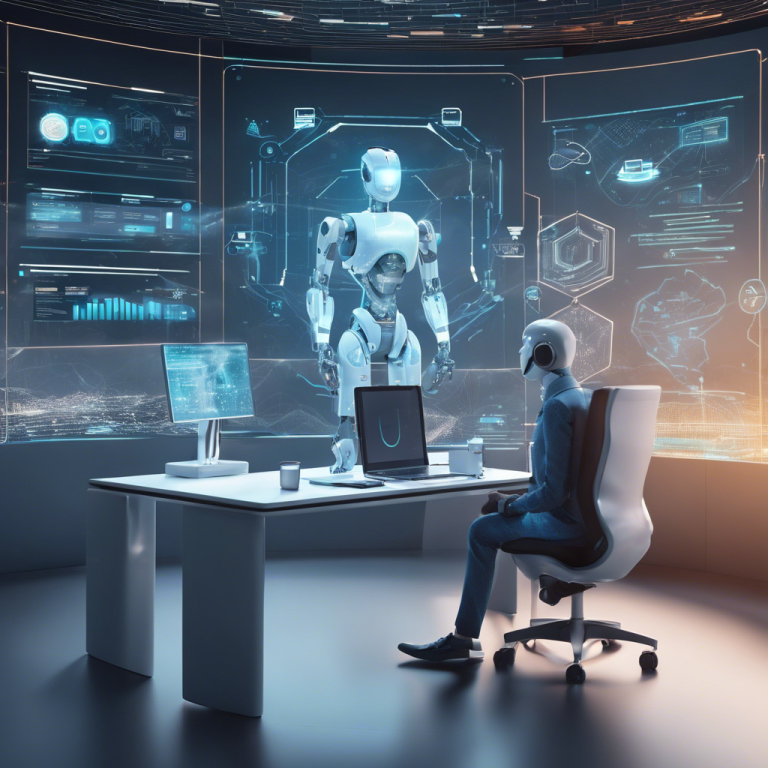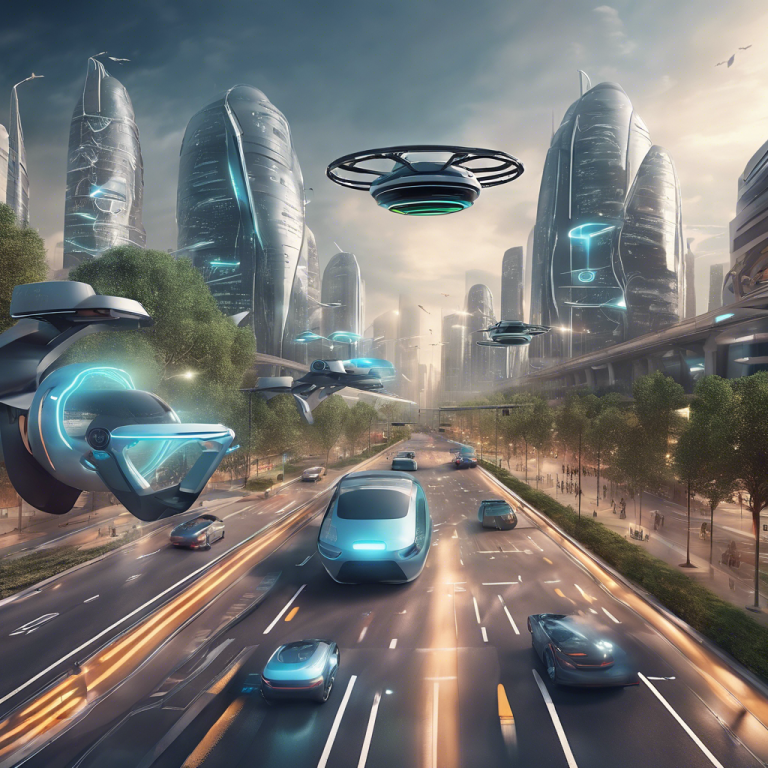As we continue to advance into the digital age, the landscape of technology is ever-evolving. Keeping up with the latest trends is crucial for businesses and individuals alike. This article will explore the top emerging technologies to watch in 2024, offering insights into how these innovations might shape our future.
Table of Contents
- Introduction
- Artificial Intelligence and Machine Learning
- Key Developments in AI and ML
- Applications of AI and ML
- Quantum Computing
- What is Quantum Computing?
- Potential Impact of Quantum Computing
- Extended Reality (XR)
- Advances in XR Technology
- Applications of XR
- 5G and Beyond
- Benefits of 5G
- Future of Connectivity
- Blockchain Technology
- Key Features of Blockchain
- Applications of Blockchain
- Internet of Things (IoT)
- IoT Trends to Watch
- IoT Applications
- Biotechnology and Genomics
- Innovations in Biotechnology
- Impact of Biotechnology
- Autonomous Vehicles
- Progress in Autonomous Vehicles
- Applications of Autonomous Vehicles
- Conclusion
Introduction
Technological advancements have always been a driving force behind societal progress. In 2024, we expect to see several emerging technologies that promise to revolutionize various industries. From artificial intelligence to biotechnology, these innovations are set to transform the way we live and work. Let’s dive into the top emerging technologies to watch in 2024 and explore their potential impact.
Artificial Intelligence and Machine Learning

Artificial Intelligence (AI) and Machine Learning (ML) have been at the forefront of technological innovation for several years. In 2024, these technologies will continue to advance, offering even more sophisticated capabilities.
Key Developments in AI and ML
- Natural Language Processing (NLP): Enhancements in NLP will allow machines to understand and respond to human language more effectively, improving communication and customer service.
- AI Ethics and Governance: As AI becomes more prevalent, the importance of ethical AI and governance frameworks will grow, ensuring that AI systems are fair, transparent, and accountable.
- Autonomous Systems: AI-driven autonomous systems, including drones and robots, will become more common, impacting industries such as logistics, manufacturing, and healthcare.
Applications of AI and ML
- Healthcare: AI will play a crucial role in diagnosing diseases, personalizing treatments, and improving patient outcomes. For instance, AI algorithms can analyze medical images to detect abnormalities with high accuracy.
- Finance: Machine learning algorithms will enhance fraud detection, risk management, and personalized financial services. AI can predict market trends and provide investment advice.
- Retail: AI-powered chatbots and recommendation systems will improve customer experience and drive sales. Personalized marketing campaigns will become more effective through data-driven insights.
Quantum Computing

Quantum computing is an emerging technology that promises to revolutionize computing by solving problems that are currently intractable for classical computers.
What is Quantum Computing?
Quantum computing leverages the principles of quantum mechanics to process information in ways that classical computers cannot. This technology has the potential to perform complex calculations at unprecedented speeds, utilizing quantum bits (qubits) that can exist in multiple states simultaneously.
Potential Impact of Quantum Computing
- Cryptography: Quantum computers could break current cryptographic algorithms, leading to the development of new, quantum-resistant encryption methods. This will impact data security across all industries.
- Drug Discovery: Quantum computing can accelerate the discovery of new drugs by simulating molecular interactions at a quantum level, drastically reducing the time and cost involved in bringing new medications to market.
- Optimization Problems: Industries such as logistics and supply chain management will benefit from quantum computing’s ability to solve complex optimization problems, improving efficiency and reducing costs.
Extended Reality (XR)
Extended Reality (XR) encompasses Virtual Reality (VR), Augmented Reality (AR), and Mixed Reality (MR), creating immersive digital experiences that blend the physical and virtual worlds.
Advances in XR Technology
- Enhanced Hardware: Improvements in XR hardware, such as lighter and more comfortable headsets, will enhance user experiences, making XR more accessible to a broader audience.
- Spatial Computing: XR will integrate more seamlessly with physical environments, enabling new applications in areas like remote collaboration, virtual meetings, and hands-on training.
- Content Creation: Advances in content creation tools will allow for more realistic and interactive XR experiences, driving innovation in entertainment, education, and enterprise applications.
Applications of XR
- Education: XR will transform education by providing immersive learning experiences and virtual classrooms, allowing students to explore complex subjects interactively.
- Healthcare: AR and VR will be used for medical training, surgical simulations, and patient rehabilitation, offering hands-on practice without real-world risks.
- Entertainment: The entertainment industry will continue to explore XR for gaming, virtual concerts, and interactive storytelling, creating new forms of media and engagement.
5G and Beyond
The rollout of 5G technology is already underway, but its full potential will be realized in the coming years, with 6G on the horizon.
Benefits of 5G
- Faster Speeds: 5G offers significantly faster download and upload speeds compared to previous generations, enabling high-quality streaming, real-time gaming, and faster data transfer.
- Low Latency: The reduced latency of 5G enables real-time applications such as autonomous vehicles, remote surgery, and augmented reality experiences.
- Massive Connectivity: 5G supports a vast number of connected devices, paving the way for the Internet of Things (IoT) expansion, where smart devices can communicate and coordinate efficiently.
Future of Connectivity
- 6G Technology: Research into 6G is already beginning, promising even higher speeds, lower latency, and advanced capabilities like integrated AI and ubiquitous connectivity. This will further enhance smart city infrastructure, advanced communication networks, and seamless integration of digital services.
Blockchain Technology
Blockchain technology, known for its role in cryptocurrencies, is finding applications in various other industries due to its decentralized and secure nature.
Key Features of Blockchain
- Transparency: Blockchain’s transparent ledger system ensures accountability and reduces fraud by providing a clear record of all transactions.
- Security: The decentralized nature of blockchain makes it highly secure against cyberattacks, as altering a single block would require altering every subsequent block in the chain.
- Smart Contracts: These self-executing contracts automatically enforce agreements when predefined conditions are met, reducing the need for intermediaries and increasing efficiency.
Applications of Blockchain
- Supply Chain Management: Blockchain can improve supply chain transparency and traceability, ensuring the authenticity and quality of products from origin to consumer.
- Finance: Beyond cryptocurrencies, blockchain is used for secure and efficient cross-border payments, digital identity verification, and decentralized finance (DeFi) applications.
- Healthcare: Blockchain can secure patient records, ensuring privacy and accuracy while facilitating data sharing among healthcare providers for better patient outcomes.
Internet of Things (IoT)
The Internet of Things (IoT) refers to the network of interconnected devices that collect and exchange data. In 2024, IoT will continue to expand, driving innovation in various sectors.
IoT Trends to Watch
- Edge Computing: Edge computing will enhance IoT by processing data closer to the source, reducing latency and bandwidth usage, and improving real-time decision-making.
- AI Integration: AI-powered IoT devices will offer smarter and more autonomous functionalities, enabling predictive maintenance, automated systems, and enhanced user experiences.
- Interoperability: Improved standards and protocols will ensure seamless communication between diverse IoT devices, fostering greater innovation and collaboration.
IoT Applications
- Smart Homes: IoT will continue to enhance home automation, security, and energy efficiency, providing convenience and sustainability for homeowners.
- Industrial IoT: Industries such as manufacturing, agriculture, and logistics will benefit from IoT-driven automation and predictive maintenance, optimizing operations and reducing downtime.
- Healthcare: IoT devices will monitor patient health in real-time, enabling proactive care and improving patient outcomes through continuous monitoring and data analysis.
Biotechnology and Genomics
Biotechnology and genomics are advancing rapidly, offering new possibilities in healthcare and beyond.
Innovations in Biotechnology
- CRISPR Technology: CRISPR gene editing will enable precise modifications to DNA, potentially curing genetic diseases and enabling new treatments for various conditions.
- Personalized Medicine: Advances in genomics will allow for treatments tailored to an individual’s genetic makeup, improving the efficacy and reducing the side effects of therapies.
- Synthetic Biology: This field will enable the design and creation of new biological parts and systems, opening up possibilities for bioengineering, sustainable materials, and environmental solutions.
Impact of Biotechnology
- Healthcare: Biotechnology will lead to breakthroughs in disease prevention, diagnosis, and treatment, improving health outcomes and longevity.
- Agriculture: Genetically modified crops will improve food security and sustainability by increasing yield, resistance to pests, and adaptability to changing climates.
- Environmental Protection: Biotechnology will offer solutions for pollution control, waste management, and resource conservation, contributing to a healthier planet.
Autonomous Vehicles

Autonomous vehicles, including self-driving cars and drones, are set to revolutionize transportation and logistics.
Progress in Autonomous Vehicles
- Advanced Sensors: Improvements in sensor technology, including LiDAR, radar, and cameras, will enhance the safety and reliability of autonomous vehicles, enabling them to navigate complex environments accurately.
- AI and Machine Learning: These technologies will enable autonomous vehicles to learn from their environment, make real-time decisions, and improve their performance over time.
- Regulation and Infrastructure: Governments and industries will work together to develop regulations and infrastructure to support autonomous vehicles, ensuring safety and integration with existing transportation systems.
Applications of Autonomous Vehicles
- Transportation: Self-driving cars will transform personal and public transportation, reducing accidents, traffic congestion, and emissions while providing greater accessibility and convenience.
- Logistics: Autonomous drones and delivery robots will streamline logistics and supply chain operations, reducing delivery times and costs while increasing efficiency.
- Agriculture: Autonomous machinery, such as tractors and harvesters, will improve efficiency and precision in farming practices, reducing labor costs and increasing productivity.
Conclusion
As we look forward to 2024, the top emerging technologies highlighted in this article promise to reshape our world in profound ways. From AI and quantum computing to biotechnology and autonomous vehicles, these innovations will drive progress across various sectors.
Staying informed about these emerging technologies and understanding their potential impact is crucial for businesses and individuals looking to thrive in the future. Embracing these advancements will open up new opportunities and pave the way for a more connected, efficient, and innovative world.
If you found this post helpful, we’d love to hear from you! Please leave your feedback at Ad One Day Contact. Thank you!

